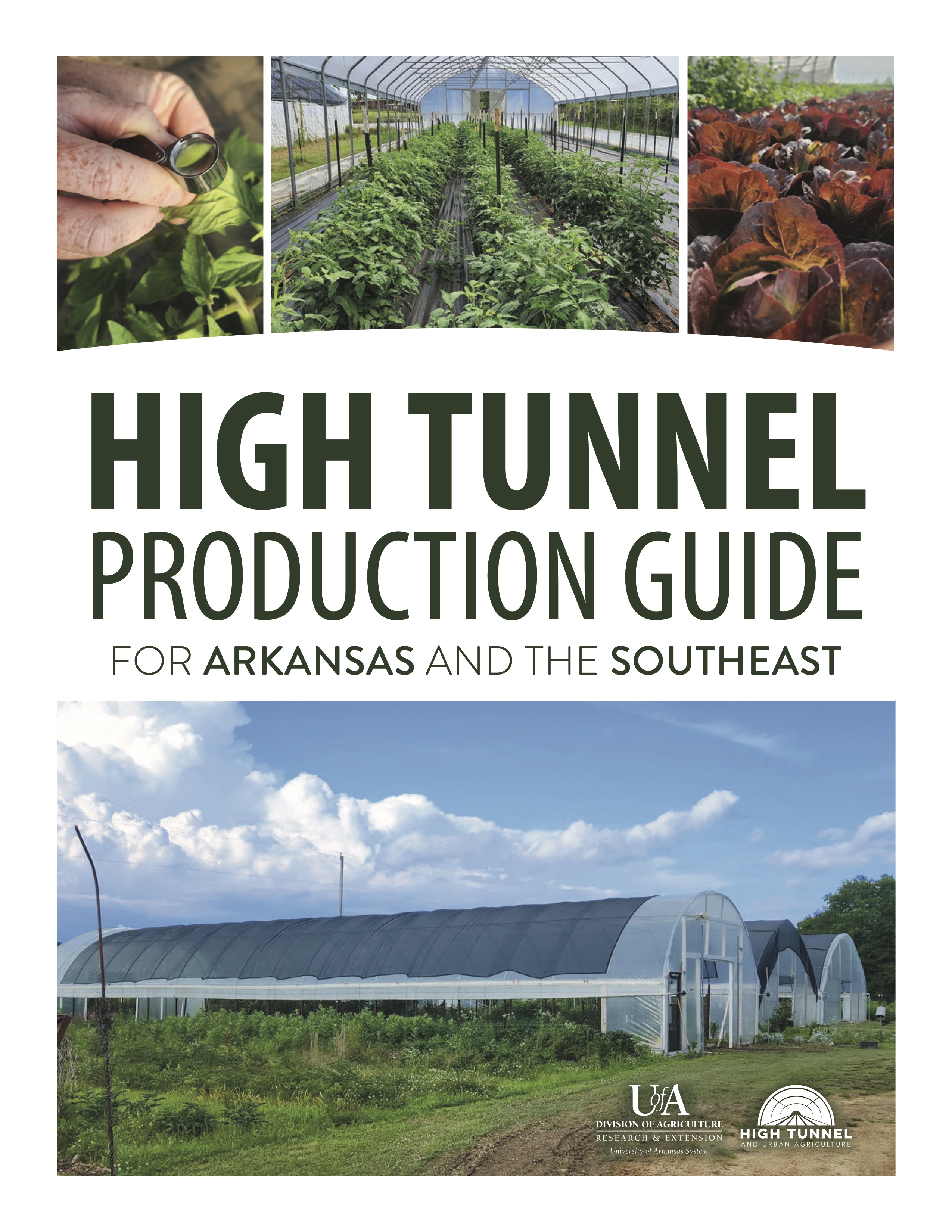Extension’s first high tunnel production guide now available
Sept. 8, 2025
By Ryan McGeeney
U of A System Division of Agriculture
Fast Facts:
- Guide tailored to southern climes
- Takes producers from planning to harvest, step by step
- Available for free download
(394 words)
(Newsrooms: With guide cover, photo of Ernst)
(‘Taunya’ in par. 2 is c.q.)
LITTLE ROCK — The Cooperative Extension Service, the outreach and education arm of the University of Arkansas System Division of Agriculture, has published its first guide to high tunnel production.
Taunya Ernst, high tunnel and urban agriculture instructor for the Division of Agriculture, said the guide is specifically tailored for growers in Arkansas and other Southern states.
“High tunnel production has been around in Arkansas for a while,” Ernst said. “There are some growers who’ve been using these structures successfully for more than 10 years. . For these early growers, the lack of resources and information tailored to Arkansas’s climate made adaptation a real challenge, and for some, management frustrations led them to abandon their tunnels after a season or two. There hasn’t been a lot of information about how to succeed with this technology in Arkansas.”
High tunnel production differs from greenhouse production in several ways, not least of which is that crops are typically planted in the soil inside high tunnels, and the structures are opened for climate management. This brings with it its own challenges in pest control, disease management and irrigation.
Ernst said the new guide is designed to take interested producers from the early stages of planning, budgeting, site selection and climate management through the growing and harvest stages.
“Our goal with the guide was to get people to think through the process from the very beginning,” Ernst said. “Can I afford this? Can I manage it? What crops work well?
“From start to finish, we were trying to make it so that people can succeed in high tunnel production,” she said.
Ernst said that she has seen high tunnels set up everywhere from traditional farmland to urban backyard spaces. She said that for those seeking to farm as a business, vegetable crops tend to be the most profitable, although producers may grow a wide range of crops, from strawberries to cut flowers in high tunnel environments.
The guide is free to download online. Ernst said she will also make physical copies available at upcoming and future workshops. The final session in a multi-part series of “tailgate meetups” is scheduled to take place Sept. 17 at the St. Joseph Farmstead, and interested individuals can register online to attend. The meetup will focus on bed preparation and transplant production. The East Arkansas High Tunnel Workshop is scheduled for Oct. 29 in Marianna, Arkansas, and online registration for that event is also open. Both events are free to attend.
To learn about extension programs in Arkansas, contact your local Cooperative Extension Service agent or visit www.uaex.uada.edu. Follow us on X and Instagram at @AR_Extension. To learn more about Division of Agriculture research, visit the Arkansas Agricultural Experiment Station website: https://aaes.uada.edu/. Follow on X at @ArkAgResearch. To learn more about the Division of Agriculture, visit https://uada.edu/. Follow us on X at @AgInArk.
About the Division of Agriculture
The University of Arkansas System Division of Agriculture’s mission is to strengthen agriculture, communities, and families by connecting trusted research to the adoption of best practices. Through the Agricultural Experiment Station and the Cooperative Extension Service, the Division of Agriculture conducts research and extension work within the nation’s historic land grant education system.
The Division of Agriculture is one of 20 entities within the University of Arkansas System. It has offices in all 75 counties in Arkansas and faculty on three campuses.
Pursuant to 7 CFR § 15.3, the University of Arkansas System Division of Agriculture offers all its Extension and Research programs and services (including employment) without regard to race, color, sex, national origin, religion, age, disability, marital or veteran status, genetic information, sexual preference, pregnancy or any other legally protected status, and is an equal opportunity institution.
# # #
Media Contact:
Ryan McGeeney
rmcgeeney@uada.edu
501-671-2120
